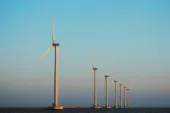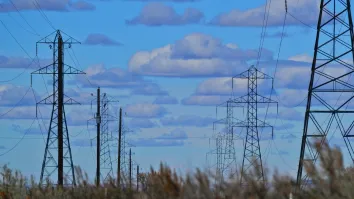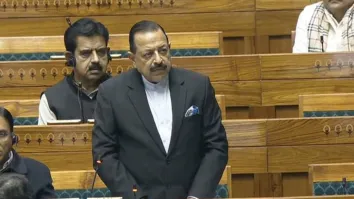
Renewable integration cited as most challenging issue in Asia’s electric industry
Around 35% said renewable integration is the top challenge for the industry.
Integration of renewables is the most challenging issue faced in the electric industry in Asia as key stakeholders including governments, regulators, and developers are all eyes on decarbonisation, Black & Veatch said.
A total of 35.1% of the industry leaders surveyed said renewable integration is the most challenging issue in the industry, according to the 2022 Asia Electric Report. Economic regulation such as rates, the uncertainty of investment, and market uncertainty due to the pandemic followed at 24.6%.
Having renewable integration as the most challenging issue in the industry, surpassing investment uncertainties from last year, “reflects an acceptance of the electric grid’s shifting complexities,” Narsingh Chaudhary executive vice president and managing director—Power Asia at Black & Veatch said.
“The structure will no longer centre around a few large baseload facilities, but instead will embrace a more distributed, digitalised array of generation sources equipped to accommodate the electrification of everything,” he said.
Chaudhary, on the other hand, said the goal of electricity providers of providing reliable and resilient grid operation and service will remain. The survey said the biggest threats to reliable grid operations in the region include government policies, underinvestment in more reliable transmission networks, and not enough storage capacity, amongst others.
He also said that locations of new solar and wind facilities were often distant from existing baseload plants, transmission lines, and from where major demand centres were.
In India, most renewable resources were in western and southern states, whilst Singapore will have to rely on importing renewable and clean energy supply abroad, Chaudhary cited as an example
Chaudhary noted that Singapore in October 20201 said that it is planning to import 30% of its electricity from low-carbon sources overseas. Progress has also been made in the Laos-Thailand-Malaysia-Singapore Power Integration Project.
Laos and Vietnam have recently reached a trading agreement for the purchase of wind energy in line with the progress on the integration of the Greater Mekong Subregion, a program that involves five Southeast Asian countries and China, he said.
“This combination of challenges facing the power industry highlights the importance of integration on a number of levels from planning to technologies, and across the industry, government, and customers,” he said.
“To help realise an affordable and successful energy transition, the industry must align with all stakeholders and embrace holistic planning and design of generation, transmission and distribution systems,” Chaudhary added.
The other challenges in the region were energy storage and planning/forecasting uncertainty, both at 21.1%, environmental regulations at 17.5%, ageing infrastructure, distributed energy resources integration, distribution system upgrades and modernisation, and access to capital investment which were all at 14%.
The market structure was also a challenge at 12.3%, and the lack of a skilled workforce at 8.8%.
The survey involved 57 senior electric industry professionals in East, South, and Southeast Asia, according to Black & Veatch.



















 Advertise
Advertise






